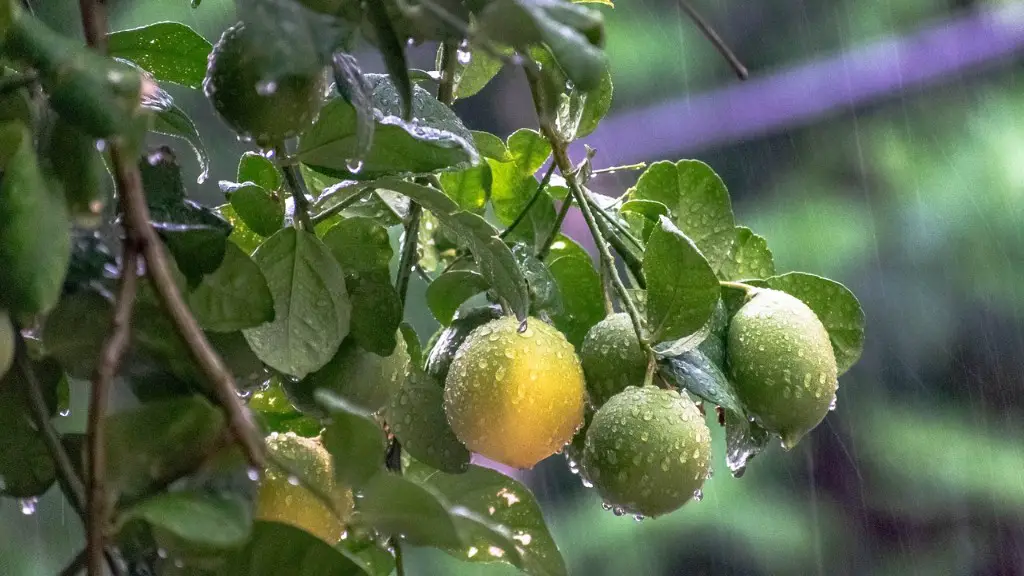Planting Steps
Avocados have ideal growing and fruiting conditions, and when these needs—for temperature, sunlight, water, and soil—are met, the process of fruitting can be optimized. When planting an avocado tree, one should first choose a healthy plant, preferably one certified by a local nursery. Planting it in well-fertilized, well-drained soil is ideal. Any soil amendments, such as bark or other amendments, should be done over an existing soil base. Once planted, water the root cavity generously.
Climate and Sunlight Requirements
Avocado trees require a lot of sunlight, which can be accomplished by placing it in an area that receives six to eight hours of direct sunlight per day. Additionally, for faster fruit production, avocado trees require a temperature range of 60-85 degrees Fahrenheit, which enables the warmth necessary for growth and fruiting. If temperatures drop lower than 40 degrees, the tree can freeze and die.
Water Requirements
For optimal growth and fruit production, avocado trees require regular irrigation, especially during the summer months. Depending on the climate and soil type, the tree can require water every three to seven days. Make sure to water until the root zone is saturated, preferably with a soaker hose, slowly allowing it to permeate the soil. This amount of water should be adjusted to climate, soil type, and irrigation method. It’s important not to drown the tree, or underwater it.
Fertilizer Requirements
Avocado trees need adequate nutrient levels to produce fruit. The tree can benefit from the addition of both organic and inorganic fertilizer for optimal growth. Place any organic matter, like manure or compost, at the base of the tree. Plant-based fertilizer should be applied every four to six weeks after the plant has been in the ground for more than one month. Inorganic fertilizers should also be applied in moderation and should specifically promote fruit production.
Tree Maintenance
Avocado trees need to be pruned on a regular basis for robust fruit production. Pruning should be done in early spring, focusing on removing the inner branches to allow the tree to get the necessary air and light. Make sure to not prune off too much of the branch, as this could damage the health of the tree. Additionally, the trees should be checked for insects and diseases.
Pollination
One of the most important parts of the avocado tree’s fruiting process is pollination. And the easiest way to ensure pollination is to provide different varieties of avocados with overlapping flowering times. This is known as cross-pollination and it can be disbursed by hand or by bees. Additionally, a commercial orchard typically keeps large numbers of bees or effective pollinators to ensure what pollination might be necessary.
Harvesting
Once the avocado tree has been nurtured and cared for, it’s time to reap the rewards. They are typically ripe in late summer or early fall, and can be harvested by shaking the tree when the fruit is fully mature. However, the fruit should be examined prior to harvesting, looking for any signs of damage such as insect infestations or functional damage. If these are found, they should be pruned off before harvesting.
Organic Methods for Faster Production
Organic methods for speeding production can be a great way to optimize the avocado tree’s fruit output. Solutions are available to supplement deficiencies in the tree, such as adding beneficial bacteria or silica, which can act as a supplement to help the tree produce more fruit. Additionally, foliar applications can be applied using a garden sprayer, providing both essential micro and macronutrients, which can improve the tree’s growth and fruit production.
Advanced Planting Techniques
Advanced planting techniques can also benefit the avocado tree, helping it to bear fruit faster. Grafting is one such method, in which a scion, supplement or rootstock of an avocado tree, most compatible with the planting site can be added to a foreign rootstock to achieve optimal production. Additionally, a budwood technique can be used, where the branches of the avocado tree are cloned and grown in different locations to reproduce the same tree.
Why Climate Plays a Role
Climate plays a role in avocado tree production because it affects the tree’s natural cycles. In warmer climates, the plant photosynthesizes more efficiently and produces more fruit. Additionally, cool climate can cause the fruit to stay green longer and can reduce the tree’s activity. Choosing to place the tree in an optimal weather can help it produce more fruit and faster.
Soil Moisture
For fast fruit production, the soil moisture needs to be consistently high, meaning that one has to be consistent with watering. This ensures that the soil remains moist, providing both aeration and drainage for the roots. Additionally, to remove air pockets in the soil, one would need to use a gardening tool or an air pocket removal tool.
Advanced Pruning Techniques
Advanced pruning techniques,such as whitewashing an avocado tree can help to aid in faster fruit production. Whitewashing involves painting a whitewash, made of a mixture of lime and water, to the back of the tree. It reduces the effect of the sun’s heat and deflects the sun’s UV rays, which can help to speed up Avocado production.
Beneficial Insects
Beneficial insects, such as ladybugs, lacewings, and mealy bugs, can also provide assistance in the process of fruitting. These insects eat the larvae of insect pests and provide natural pest control which can result in healthier Avocado trees and enhanced fruit production. Additionally, beneficial insects can reduce the amount of insecticides used, which can help rid the tree of any possible deleterious effects.
Natural Mulching
Natural mulching can also be beneficial for avocado tree fruit production, without the use of any chemicals. Using organic substances, such as straw and hay, will reduce the amount of weeds and help to keep the soil moist. This will also reduce the amount of water lost, allowing a more direct water supply to the tree. Additionally, mulching improves the soil texture, enhances nutrient uptake and reduces air pockets in the soil.


